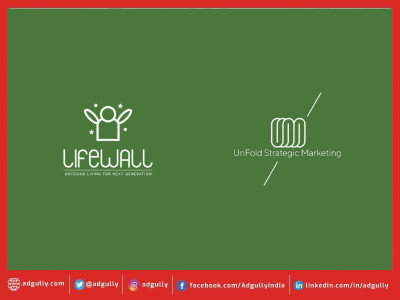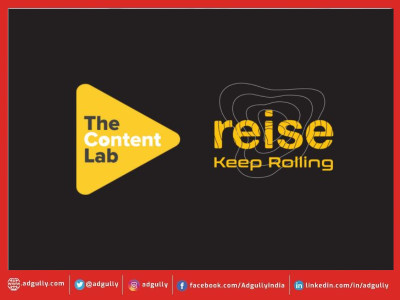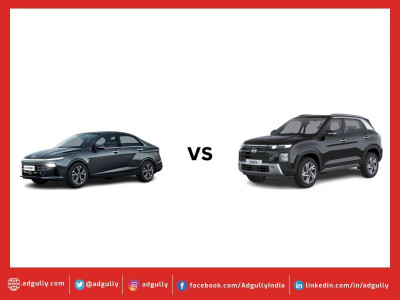Amid slowdown, cautious optimism defines festive season sentiment
Mayur Jaiswal, an advertising and media professional from Mumbai, is a regular online shopper. His next set of purchases includes new items for his home for Diwali, such as mixer grinder, a trimmer, probably a new set of jogging shoes, some clothes and a mobile phone. Interestingly, he has stalled all his purchases until the forthcoming grand sale by e-commerce majors like Amazon and Flipkart. Like every, Jaiswal also prefers to save some moolah via the heavy discounts that these portals will offer on these products. He is expected to save somewhere between Rs 5,000 and Rs 12,000 on his purchases. This is enough money for anyone to make him wait for a couple of weeks.
If we keenly look into the purchase intent of Jaiswal, he is likely to include a handset brand, FMCG brands, and fashion apparel brands in his list of purchases. Along with auto, jewellery and consumer durables, these categories lead the festive sales, every year. A senior marketer once mentioned at a conference that Diwali is that time of the year when marketers know exactly what is on a consumer’s shopping list and this understanding does not need to rely much on Big Data or any other technology.
Today, Jaiswal and millions like him, who have a decent chunk of disposable income, are on the target lists of marketers. Usually, these consumers nearly double their spending during this period, but it might be slightly different this year, given that we are in the midst of a slowdown that the government and institutions are trying to tackle. A senior industry person, on the condition of anonymity, clearly defined the situation, saying, “We are not in the midst of a recession, but there is an economic slowdown, which means consumers are cautious with their spending.”
Will the Slowdown Impact Festive Mood?
The slowdown is a result of multiple factors such as decreased demand, slump in the auto sector, banks losing confidence in non-banking financial companies (NBFCs) that leads to consumers not having access to the credit that drive purchases and grows the economy, and trade wars.
The repeated use of the words and phrases like default, slump, crash, trade war, fall, crises, taxation and unemployment in the Indian media has contributed to the fall in consumer confidence. The Government is trying to restore this trust by recently reducing the corporate tax, providing subsidy to the auto sector, housing industry and other sectors.
Dentsu Aegis Network, CEO - India, Anand Bhadkamkar says, "Around 40% of advertising budgets are spent during this period. Due to the economic slowdown and weak consumer demand, we have seen advertising spends impacted across multiple sectors this year. However, with the efforts by government to tackle slower economic growth, backed by a good monsoon should help improve consumer demand during this festive period. Festive season spends will accordingly see a moderate growth during this period."
Despite this slowdown, the brands are not shying away from advertising during the festive season as they get a major chunk of their annual revenue from this period. They are leaving no stone unturned to make their year look profitable and meet targets despite the slowdown. As per a WARC report, Indian brands are expected to spend a hefty sum of $3.9 billion in advertising during the festive season that runs right from Ganpati to Christmas.
For the ghee-shakkar loving Indian audience, RS Sodhi, Managing Director, GCMMF Ltd (Amul), had tweeted, “Amul achieved 26 per cent growth in the last five months. Where is the slowdown? Searching!” Such sentiment bodes well for the basic home provisions and FMCG brands.
Likewise, Amit Adarkar, CEO, Ipsos India and Operations Director, Asia Pacific, Ipsos, observes, “Consumers are cautious with their spends in general. But interestingly, some of the discretionary (premium personal care, premium chocolates) and ‘experience-based’ categories (international vacations, salons) continue to buck the trend.”
Mumbai-based Jaiswal celebrated the festival of Ganpati and is all set to celebrate Diwali with equal fervour. During Ganpati, he indulged in sweets, got new clothes, organised prayers and invited people to his home. As a result, he bought items necessary for puja and some new kitchen utensils to entertain his guests. All these products will be brought to use for Diwali, when he intends to have card parties at home that will see a sizeable consumption of good food and beverages. Slowdown or not, people are most motivated to get together with their loved ones during this time of the year.
This is a similar pattern followed by any average Indian household across any region (though the festival could with the geography). The period drives huge consumption of food items, beverages, kitchen utensils, household furnishings, apparels, linen and many other categories. This leads to a competition amongst the brands in each of these categories to ensure that they have top of the mind recall of the consumer when he is buying the goods at a mall or a mart.
"Consumers upgrade during the festival season – whether it is for a bigger car or a better smartphone. There is no reason why this shouldn’t happen this year. At the same time, we have seen some de-seasonalization over the years, due to ongoing discounts & frequent e-commerce sales" believes Ipsos India's Adarkar.
Ad Spends: Increase or Decrease?
As per several reports, the overall ad spends during Diwali season will be around Rs 25,000 crore. This includes spends from top players and smaller players.
DAN's Bhadkamkar, predicts that the overall ad spends will continue to grow by 10-11 per cent. He shares a cautious optimism with many in the industry that Indian brands will continue to bet big on the festive season this year. The following example sheds some light on why the industry feels this way.
Despite pressure on the auto sector, we continue to see new launches happening in the category. Kia Motors India launched their Kia Seltos in the mid-range SUV segment and took the lead with 40,000 bookings in the first month of sale. MG Hector has grabbed 3rd place with 28,000 units sold so far. Another sector that has made gains this year is the mobile handset category. Xiaomi, OnePlus and Apple have all reported good quarters this year. The fact that Apple, one of the most premium smartphone players, recorded growth in the Indian market even as sales were floundering last year tells us that something else is at play here.
While traditional brands build their inventories to ramp up their sales and offerings, digital brands have also joined the brand war. Brands such as OLX, Cars 24, and CarDekho have already started advertising heavily.
Satya Prabhakar, CEO, Sulekha, informs that services categories like pest control, painting, and salon & grooming service, sofa cloth dealers, and modular kitchen services are the underdogs that will see a surge during the season.
We are already seeing a campaign burst by Flipkart and Amazon to promote their annual bonanza. The fight is going to intensify in the next few days. Their ad spends are expected to be to the tune of Rs 300-400 crore, as predicted by a brand expert. The duo’s combined ad spends during the Diwali season in 2018 crossed Rs 400 crore.
Sakshi Arora, Associate Vice President - Strategy, Digitas India, opines that every year these players set benchmarks in festive season marketing and this year will be no different.
Agreeing with this, Sulekha’s Prabhakar says, “E-commerce players have a long-term commitment to getting more and more Indians to transact online, especially from Tier 2 and 3 cities. Festive season sales have become the norm every year from these players and they are likely to continue pushing attractive deals and offers to increase overall ecommerce adoption in the country.”
The e-commerce players are now fighting for the next 100 million audiences. Traditionally, most of the big-ticket purchases take place around Dusshera, Dhanteras and Diwali as Indian consumer is always looking to upgrade during these months.
Kashyap Vadapalli, CMO, Pepperfry, maintained that his company is yet to witness a visible impact of the slowdown. “If you look at our last 6 months and year on year growth or even month on month performance, it has been better than last year. Even in the early days of September, we have seen pretty much no impact and are able to maintain the momentum that has been there over the last six months,” he affirms.
On the other hand, we now look at the smaller players. Sameer Gangwani, a third-generation entrepreneur operating from the bazaars of Chandni Chowk, has started his advertising campaign on the two Metro stations of the area. He sells accessories and decorative items. The outdoor campaign is unlike a PepsiCo or Coca Cola campaign with a specific brand positioning. Gangwani has taken a billboard that carries information of his shop number and the goods that he sells. It is a simple creative done by a local ad agency. He is optimistic about getting footfalls to his stores. His counterparts in the area have also ramped up their inventory and are now awaiting the end of the Shraadh season as the consumers – both retail and wholesale – jump into the markets post this 15-day period. A similar sentiment was echoed by an electronics shop in Kirti Nagar of New Delhi that sells televisions and other products.
Narendra Kanetkar, Director & CMO of Batooni, a platform for hyperlocal video advertising on mobile phones, mentions that kirana stores will be least affected by the slowdown during Diwali, sentiment is expected to die down quickly once the festivities come to an end.
He says, “Even local stores that never use a mass medium like radio, print or TV will do some outdoor or BTL advertising during this period. Considering kirana stores’ business volumes and radius of operation, we at Batooni are expecting a good volume of hyperlocal advertising during this festive season.”
Amit Syngle, COO, Asian Paints, a brand that heavily relies on its channel partners spread out across the country, puts it more succinctly, “The festive season will be short and we do not expect any fireworks. Given the shorter season actual retail months do reduce. However, the positive is that we have had decent monsoons and that should bring good optimism to the seasonal demand leading to a better consumer sentiment.”
There’s only one problem. Despite the volume of digital transaction going up by 58.8 per cent to reach 23.4 billion, cash still drives impulse purchases during the festive season and wallets are light.
But will they be able to do so this year?
Which Advertising Medium Wins?
From a national advertiser’s perspective, the 45-day period between Ganesh Chaturthi and Diwali is the most important advertising period for marketers. The big festivals are Navratri, Durga Puja, Dussehra and Diwali. Festivals like Onam, Karva Chauth, Christmas and Lohri have a more localised impact due to regional preferences.
During the critical advertising days, Mohit Joshi, Managing Director, Havas Media Group, predicts that “TV will continue to take the largest pie. In my view, print will see an impact.”
It is expected that television coupled with print will drive over 60 per cent of advertising revenues during the season. However, there is nothing new about it because the two mediums drive a huge reach and cuts across the categories.
Some of the big brands have launched fresh campaigns for the season in order to break the clutter during the season.
"The marketers who were impacted by the economic slowdown had reduced their advertising spends during recent months. Advertisers will be pushing aggressively during the festive season to improve the performance and protect market share. Brands will utilize their advertising budgets during this festive season, which were cut during last quarter by increasing the spends but with more judicious allocation across mediums. We see a moderate growth in the festive season on account of this" adds Bhadkamkar.
Since, sales and promotions will be the core focus of brand communications, print will be leveraged to advertise best prices, offers and products. TV will aid brand recall when the consumer is on the last mile of the buying journey.
Several national advertisers will cover their advertising geography using hoardings.
A lot of industry experts believe that digital will be the game changer this season. “RoI will be critical this festive season because of the economic slowdown. Brands are expected to prioritise that over anything else,” adds Joshi.
Urban Clap expects demand for grooming and cleaning services to rise by 2.5X before and after Diwali, and has bet big on the digital. “50 per cent of our spends are invested in digital channels, where you can easily control your customer acquisition cost and targeting,” says Rahul Deorah, VP – Marketing, Urban Clap.
Adding to this, Pepperfry’s Vadapalli has seen incredible results from performance marketing. “Brand building gives you results in a 2-3-year timeframe, but actual growth comes through performance marketing. Since we have made this shift, our budgets are 50-60 per cent of what they were earlier.”
While consumers are willing to buy, they are thinking twice about where to spend their money. Since the window to exploit positive consumer sentiment is shorter, visibility and a seamless purchasing journey will be key to driving sales.
This year, there needs to be an increase in clutter breaking communication from the brands if they are to win over the consumer, stresses Digitas India’s Arora.
“As per tradition, marketing and advertising will continue to be aggressive this festive season” she states, adding that the degree will vary depending on the category. “Yes, the economic slowdown is real, but the festive season is not only a great opportunity to boost sales, it is also a time for new customer acquisition,” she reasons.

























Share
Facebook
YouTube
Tweet
Twitter
LinkedIn